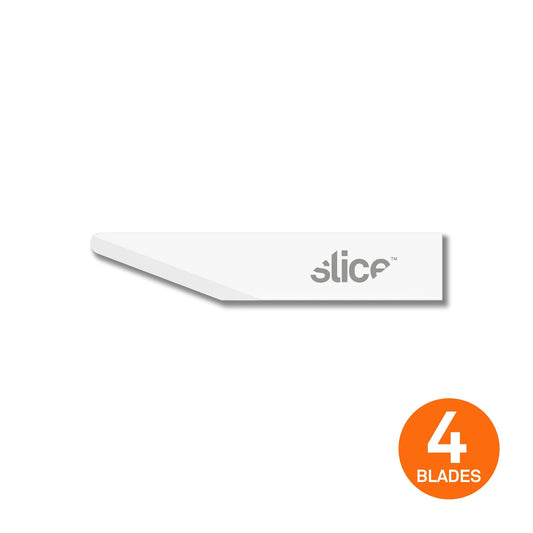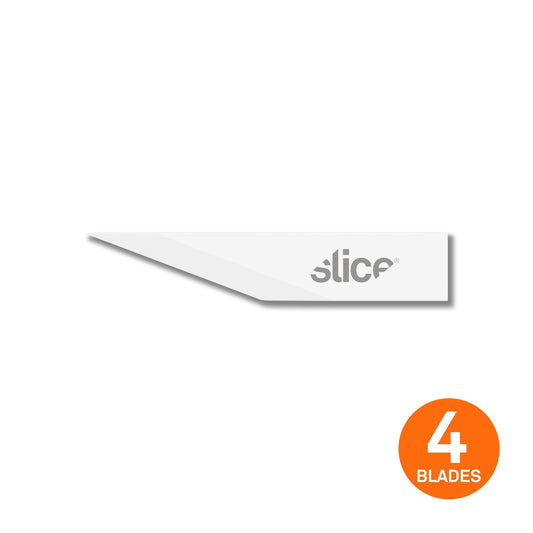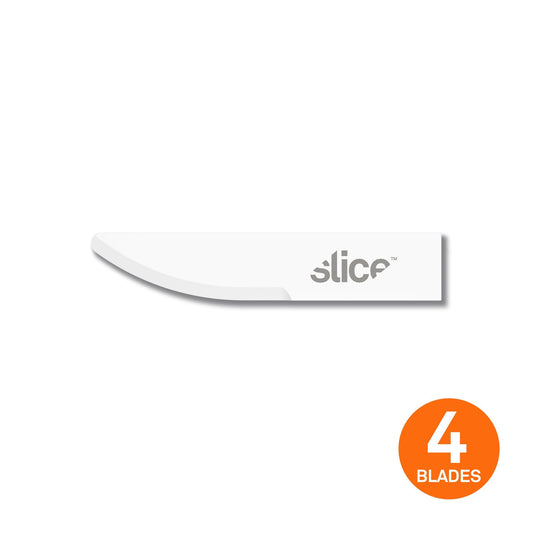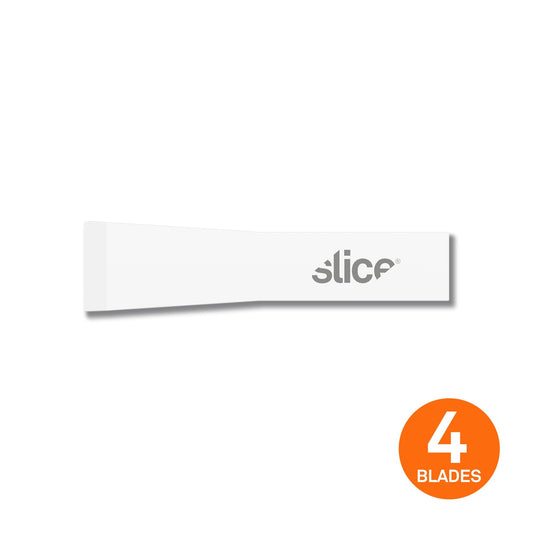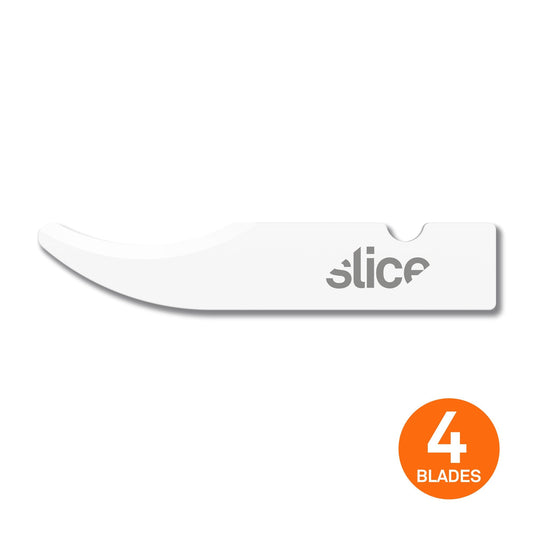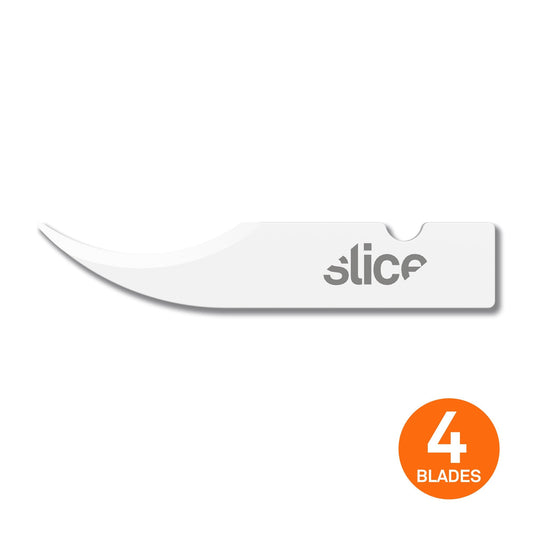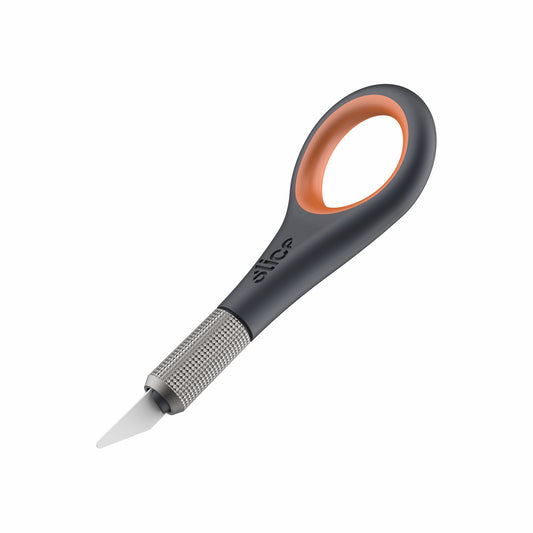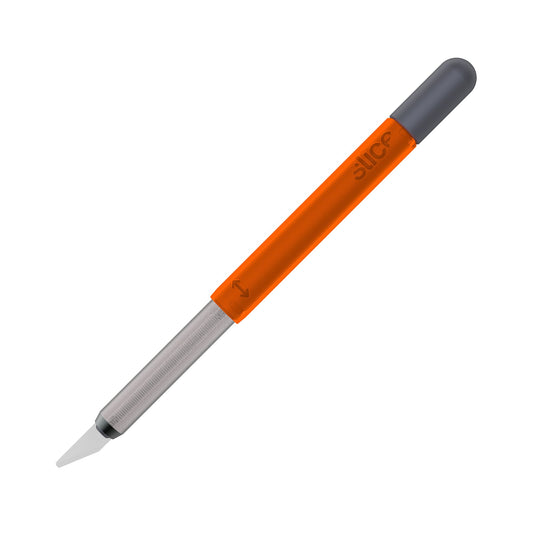SKU #10548
Kézműves kés
A Slice® 10548 kézműves kés ideális precíziós vágáshoz, kaparáshoz és kezeléshez. Kerámia biztonsági pengéje szikramentes, kémiailag közömbös, 1600 Celsius fokig biztonságos, soha nem rozsdásodik és nem igényel olajbevonatot. Kiemelkedő irányítást biztosító, érdes markolatával ez a precíziós kés pontos, kifinomult vágásokat tesz lehetővé. Kényelmes, gördülésmentes dizájnjának köszönhetően kiegyensúlyozott és stabil. A 10548 modell egy 10518 egyenes élű, lekerekített hegyű kerámia biztonsági pengét kapott, mely szabadalmaztatott ujjbarát élünkkel rendelkezik.
- Penge típusa: egyenes él, lekerekített hegy
- Gördülésmentes nyél keresztvonalkákkal bordázott markolattal
- Kompatibilis pengék: 10518, 10519, 10520, 10532, 10534, 10535, 10536, 10537
- Az ujjbarát él 11x hosszabb ideig éles marad
- Minimalizálja a sérüléseket, csökkenti a költségeket
- Szikramentes, nem vezető penge
- 1 db lekerekített hegyű kerámiapenge alaptartozék
- Kétkezes dizájn
- Szerszámmentes pengecsere
- Kevesebb pengecsere = kevesebb sérülés
- SKU #10548
Great for:
- Cutting craft materials
- Manipulating laboratory samples
- Deburring soft plastics
Product Specifications
Product Specifications
Cutting Depth:
Material: GFN, brass, PP, zirconium oxide
Dimensions: L x W x H
Weight: 0.033 kg








Compatible Products
Videos
-
Craft Knife
-
Scratchboard Artist Interview: Tools for Scratchboard Art
-
Cutting Copper Foil: It’s Easy With Slice Tools
-
Cutting Thermal Shrink Covering With Slice Tools
-
How to Cut Appliqué Templates for Quilting
-
Cutting Ceramic Fiber Paper Safely With Durable Slice Blades
-
How To Cut Felt
-
How To Cut Painter’s Tape Using Slice Tools
-
Blade Replacement for Slice Craft Tool Handles
Related Products
FAQ
What Is a Craft Knife?
A craft knife is a type of precision knife with a long blade. Long, in this case, is in comparison with micro blades, such as the one found in the 00116 Slice Precision Cutter. Our craft tool features a cutting depth around 12 to 16 millimeters, depending on which blade you choose, as opposed to the Precision Cutter, whose blade depth is around 1.5 millimeters. Despite its name, a crafting knife has uses well beyond the crafting world. Industries as varied as aerospace, electronics manufacturing, and pharmaceuticals all use craft blades. Any application that requires precision and accuracy is well suited to this type of tool.
What Is a Craft Knife Used For?
Among crafters and hobbyists, this style of knife is used on a variety of materials, such as delicate paper and fabrics, tough leather, and vinyls used in RC modeling. Scrapbookers love the versatility of this style of art cutter since they encounter a number of different media in their work. Sculptors and scratchboard artists also appreciate the control that the Slice 10548 knife gives them.
While artists and crafters often choose it for paper cutting or sculpting, its design also lends itself well to industrial and laboratory applications. These include cutting around delicate electrical components and manipulating small samples in a lab. Unlike steel blades, the ceramic safety blades in Slice knives are non-conductive, chemically inert, and don't require special oil coatings. This reduces maintenance time, lowers the chance of lacerations, and removes any uncertainty around altering the material that’s being cut, scraped, or trimmed.
While artists and crafters often choose it for paper cutting or sculpting, its design also lends itself well to industrial and laboratory applications. These include cutting around delicate electrical components and manipulating small samples in a lab. Unlike steel blades, the ceramic safety blades in Slice knives are non-conductive, chemically inert, and don't require special oil coatings. This reduces maintenance time, lowers the chance of lacerations, and removes any uncertainty around altering the material that’s being cut, scraped, or trimmed.
How to Use a Craft Cutter Safely?
First of all, be sure you choose the right knife for the job. The Slice 10548 knife ships with a 10518 straight-edge, round-point blade for safety, but any job requiring a piercing action to initiate the cut is better suited to a pointed-tip blade, such as the Slice 10519 blade. Always be sure to replace the safety cap after use and work in a distraction-free environment whenever possible. The 10548 knife includes extra safety features, such as a cross-hatched grip and a no-roll design to increase your control and keep your tool close by.
How Do I Replace the Blade? How Often?
Craft blades should ideally be replaced once they dull enough to require extra pressure to make a cut. Because Slice uses advanced ceramics—a much harder material than stainless steel—our ceramic safety blades last an average of 11 times longer than comparable steel blades. This means you’ll be replacing your blade less often than you would for a metal blade.
To replace the finger-friendly blade in a Slice craft knife, unscrew the grip section to loosen the tool’s blade enclosure. When the blade is loose enough to pull out easily, simply remove it and insert a fresh blade.
To replace the finger-friendly blade in a Slice craft knife, unscrew the grip section to loosen the tool’s blade enclosure. When the blade is loose enough to pull out easily, simply remove it and insert a fresh blade.
How Is the Slice 10548 Blade Safer Than a Metal Blade?
Like all our ceramic safety blades, Slice craft blades feature our proprietary finger-friendly® edge. This means that while the blades cut materials effectively, they are engineered to resist cutting skin. This safety feature, more than any other, sets Slice apart. While other companies redesign their handles to reduce blade exposure, we redesigned the blade itself. For more information about our design, read The Safety Blade: Everything You Need to Know.











